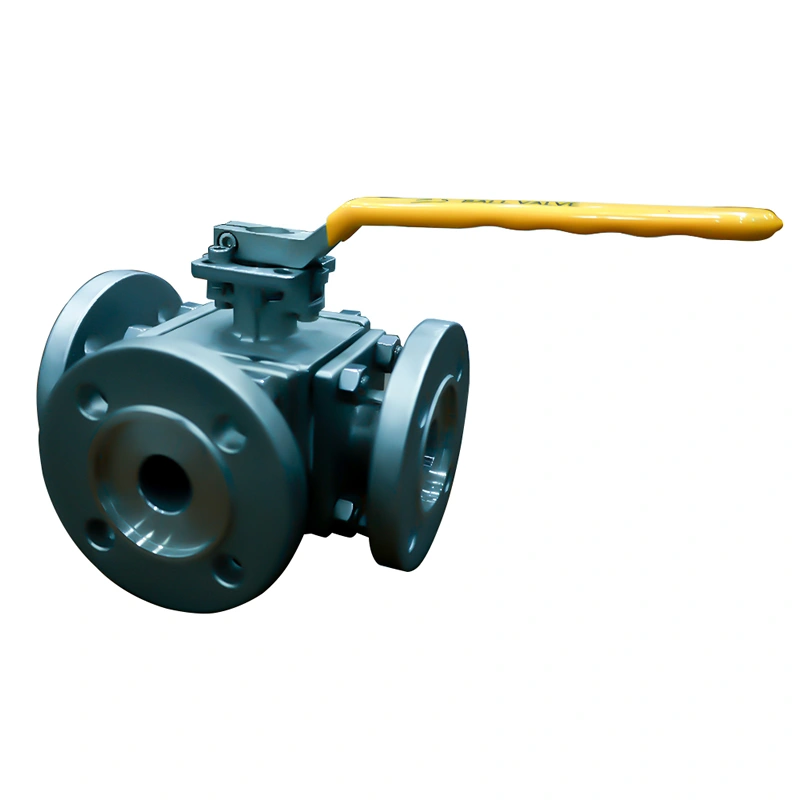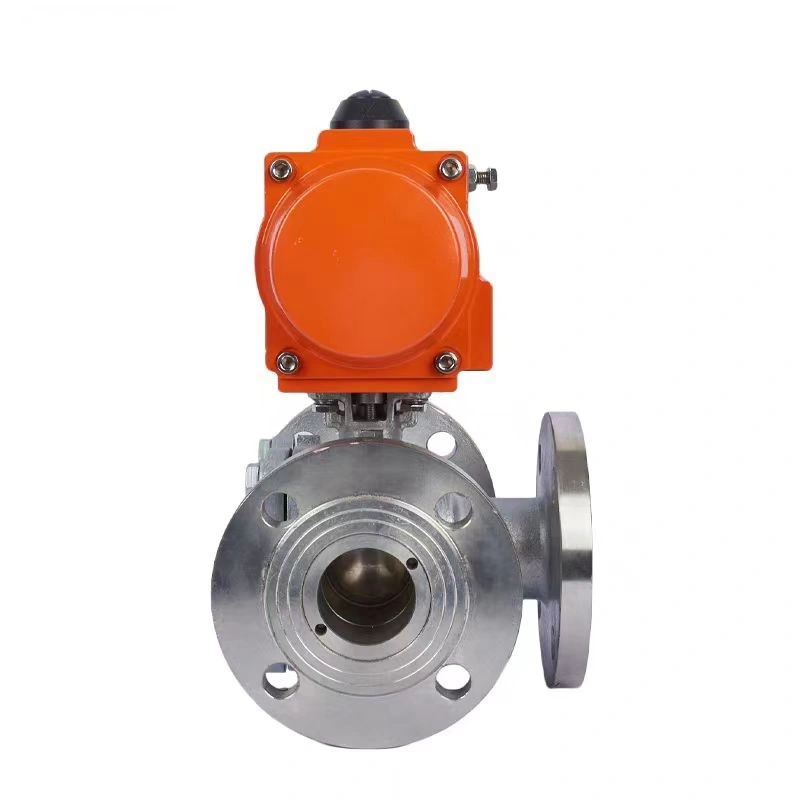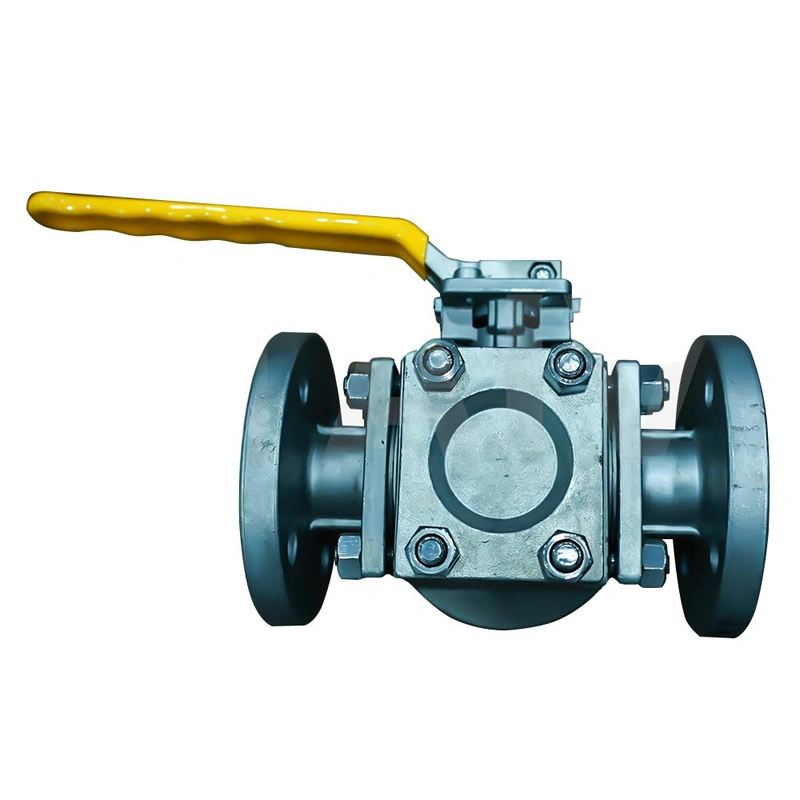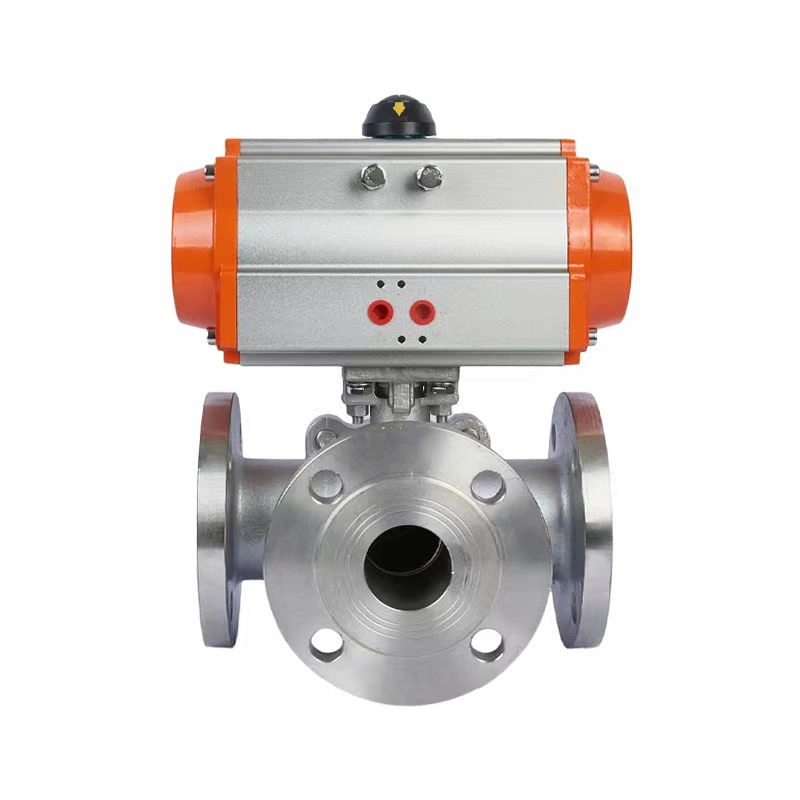- DN15-NPT
- General
- Manual
- Normal Temperature
- Water
- Stainless steel
- 8 bar
- 1/4 in
- PTFE
- 1.6-6.4 MPa
Specification
Stainless Steel 3-way Flange Ball Valve Features
(1) The fluid resistance is small, and its Drag coefficient is equal to that of pipe sections with the same length.
(2) Simple structure, small size, and light weight.
(3) Tight and reliable, plastic is widely used as the sealing surface material for ball valves, with good sealing performance. It has also been widely used in vacuum systems.
(4) Convenient operation, quick opening and closing, with only 90 ° rotation from full opening to full closing, facilitating remote control.
(5) Convenient maintenance, simple ball valve structure, and generally movable sealing rings make disassembly and replacement more convenient.
(6) When fully open or fully closed, the sealing surfaces of the ball and valve seat are isolated from the medium, and when the medium passes through, it will not cause erosion of the valve sealing surface.
(7) It has a wide range of applications, with diameters ranging from a few millimeters to several meters, and can be applied from high vacuum to high pressure. When the ball rotates 90 degrees, it should all present a spherical surface at the inlet and outlet, thereby cutting off the flow
Product Overview
Stainless Steel 3-Way Flanged Ball Valve: Efficient Pneumatic-Driven Solution for Industrial Fluid Control
I. Technical Overview
The Newway Stainless Steel 3-Way Flanged Ball Valve is a high-performance control device designed for medium diversion and confluence in industrial pipelines. The 5-inch (DN200) model features a T-type three-way structure, supporting L-type and T-type flow direction switching. With pneumatic drive and an electric handle, it enables automated control for water, oil, gas, and other media in pipeline systems. Made of 304/316 stainless steel forged body, with a nominal pressure of 1.6-6.4MPa and working temperature of -20℃~232℃ (up to 350℃ for high-temperature models), it is widely used in chemical, petroleum, water treatment, HVAC, and other industries for pipeline diversion control.
II. Core Product Features
(A) Three-Way Flow Control Design
Dual-mode L/T Structure: The L-type structure enables 90° steering control for two channels, while the T-type structure supports arbitrary flow switching among three channels, meeting medium diversion, confluence, and redirection needs with a switching accuracy of ±0.5°;
Low Flow Resistance: The flow channel design follows ASME B16.34, with a fluid resistance coefficient ≤0.8 (same diameter pipeline), reducing pressure loss by 40% compared to traditional globe valves, saving approximately 15,000kWh of pumping energy annually;
Bubble-tight Sealing: The valve seat uses PTFE + carbon fiber reinforced material with a spring preloading mechanism, achieving bidirectional sealing (leakage rate ≤1×10⁻⁹m³/s), compliant with API 598 Class IV standards.
(B) Pneumatic Drive Advantages
Rapid Response: Double-acting pneumatic actuator responds within ≤0.8 seconds (DN200 model), supporting 0.4-0.7MPa air source pressure, suitable for automated control systems;
Manual Emergency Operation: Standard handwheel mechanism allows manual operation (operating torque ≤180N·m) during air source failure, ensuring valve control in emergencies;
Explosion-proof Design: Optional ATEX-certified pneumatic actuators suit Class I, Div. 1 hazardous areas, meeting petrochemical explosion-proof requirements.
(C) Structural and Material Advantages
Fully Forged Stainless Steel Body: Made by die forging of 304/316 stainless steel (forging ratio ≥4:1), with tensile strength ≥515MPa, resistant to chloride stress corrosion, suitable for coastal and chemical corrosive environments;
Maintenance-free Design: The stem adopts a blowout-proof structure (ASME B16.34 standard) with V-type packing sealing, achieving a service life of 100,000 opening/closing cycles and extending the maintenance cycle to 24 months;
Lightweight Structure: 25% lighter than cast steel valves of the same specification, reducing installation space by 30%, facilitating installation in high-altitude or compact environments.
III. Key Technical Attributes
|
Parameter Category |
Technical Indicators |
Expansion Options |
|
Size Range |
DN15~DN100 (1/2″~4″), custom 5″ (DN200) |
Up to DN200 (8″) |
|
Pressure Rating |
PN16~PN64 (1.6~6.4MPa) |
Class 150~600 (optional) |
|
Body Material |
304 (06Cr19Ni10), 316 (06Cr17Ni12Mo2) |
316L, duplex steel 2205 (acid-resistant) |
|
Seal Material |
PTFE, RPTFE, Viton fluoroelastomer |
PEEK (260℃ resistance), Stellite metal seal |
|
Drive Mode |
Pneumatic (double-acting/single-acting), manual |
Electric (explosion-proof), hydraulic |
|
Testing Standard |
1.5x hydrostatic pressure test (30-min hold) |
API 598, ISO 15848-1 (low leakage certification) |
IV. Precision Manufacturing Processes
(A) Forging and Machining
Body Forming: Stainless steel billets forged by 1000-ton friction press, with grain size reaching ASTM No.7 or above, and ultrasonic testing (UT) for internal defects (sensitivity ≥Φ1.2mm);
Ball Machining: Five-axis CNC grinding ensures ball roundness ≤0.005mm, fit clearance with seat ≤0.01mm, and surface roughness Ra≤0.8μm, ensuring sealing surface precision.
(B) Surface Treatment
Standard Conditions: Body surface passivated (ASTM A967 standard), doubling corrosion resistance;
Special Conditions: Optional epoxy powder coating (200μm thickness) for marine environments, passing 1000-hour salt spray test; electropolishing (Ra≤0.4μm) for food-grade applications, compliant with FDA 21 CFR 177.2600.
(C) Quality Control
Full Inspection: 100% air pressure sealing test (0.6MPa, 15-min hold) for each valve, key dimensions measured by CMM (accuracy ±0.02mm);
Life Testing: Sampling for 50,000 opening/closing cycles (under pressure) with sealing performance retention ≥95%, far exceeding industry standards (30,000 cycles).




